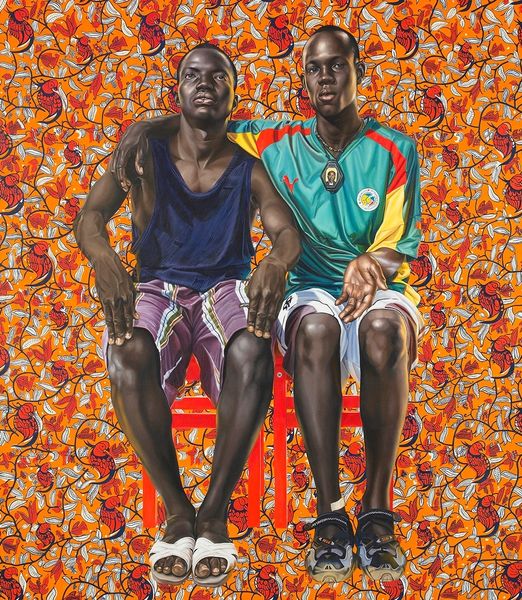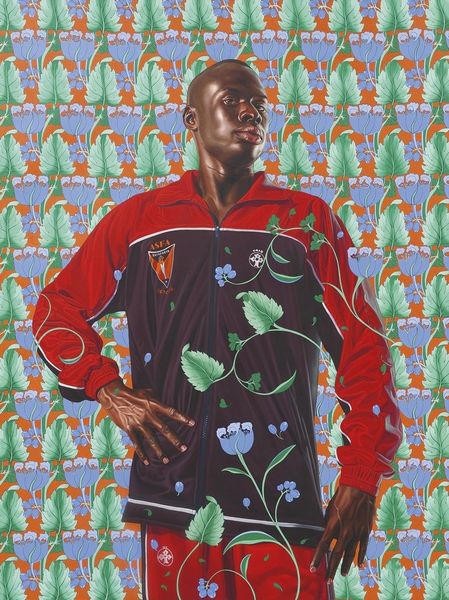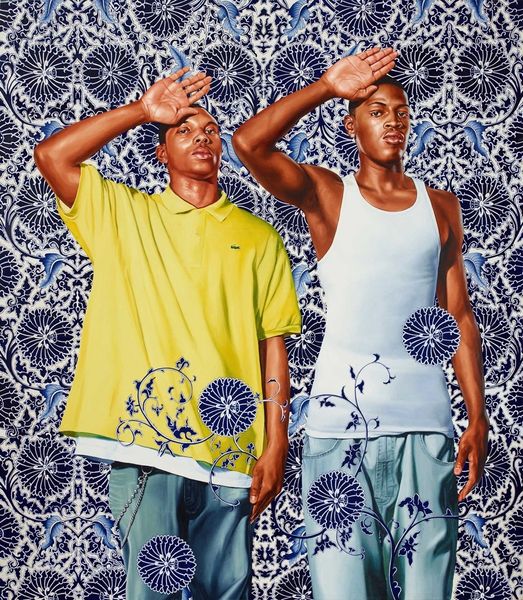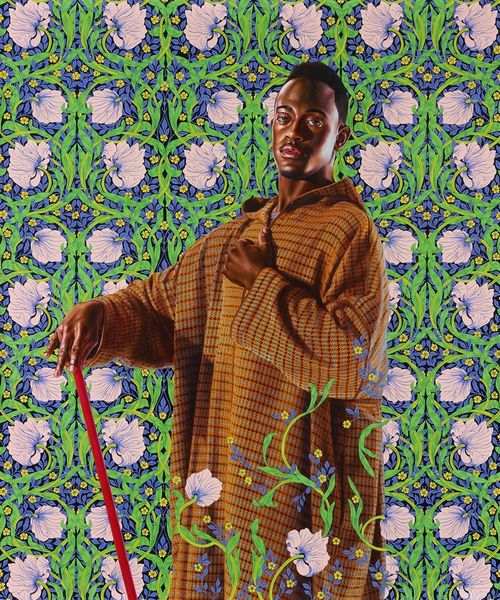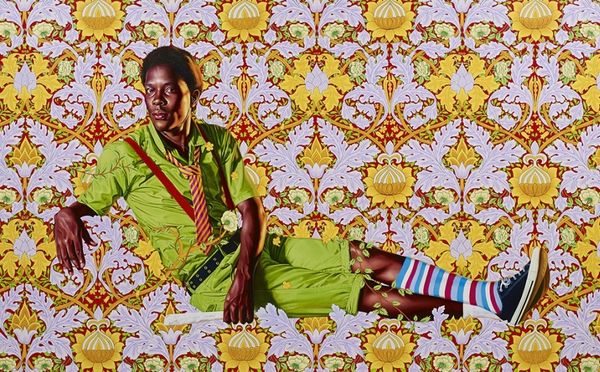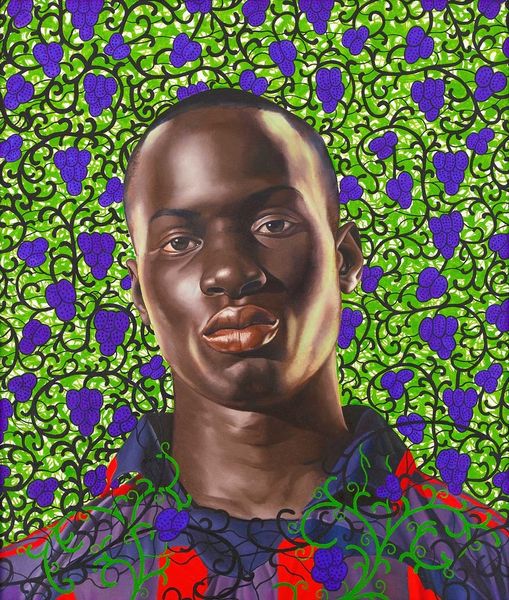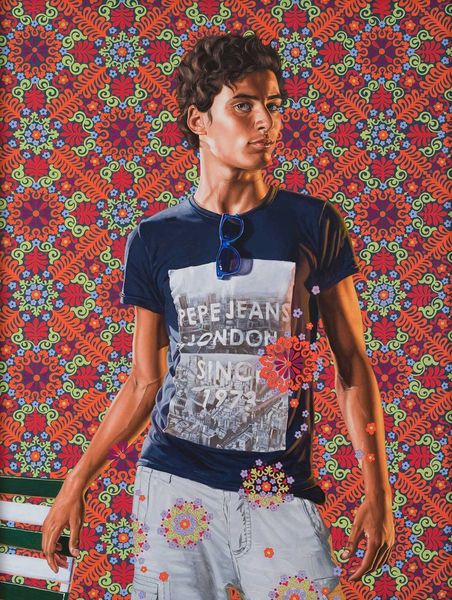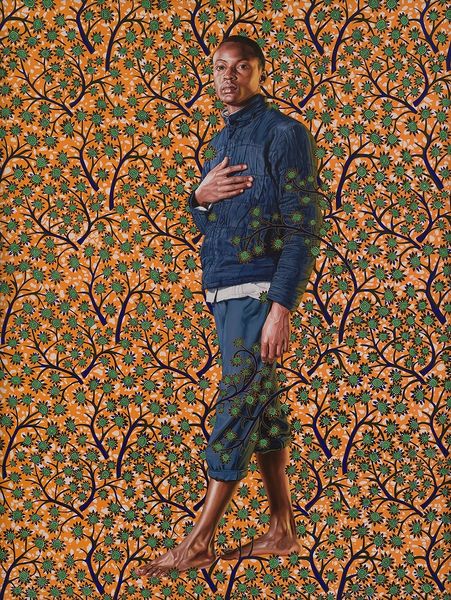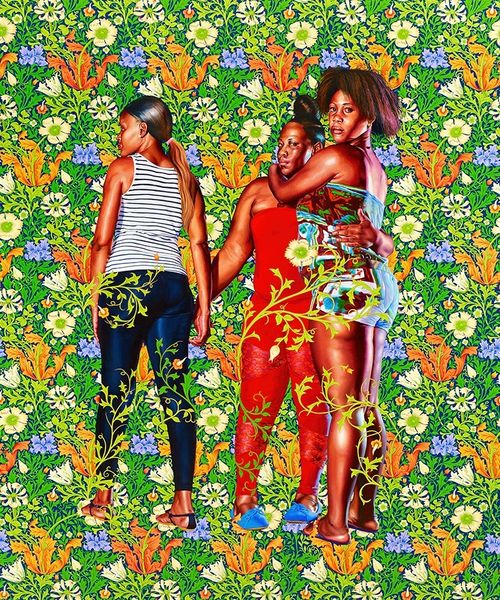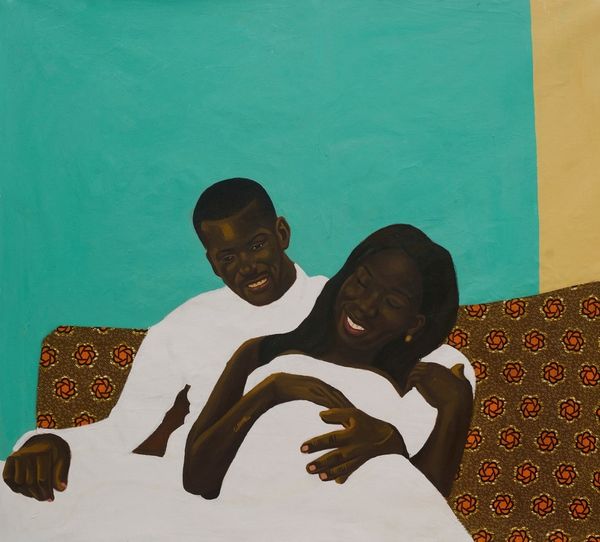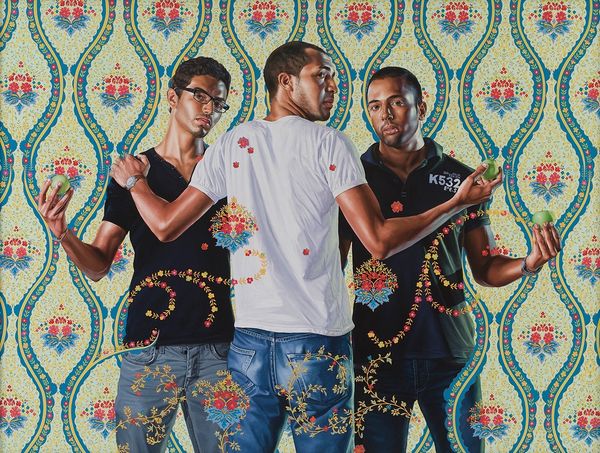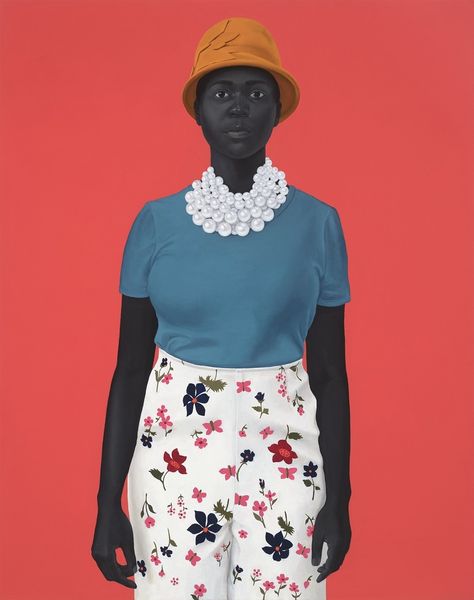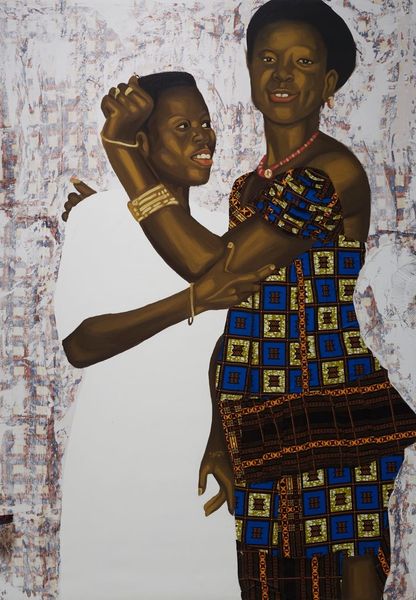
#
pattern-and-decoration
Copyright: Modern Artists: Artvee
Curator: This is Kehinde Wiley's "Place Soweto," created in 2008. Wiley is renowned for his portraits of contemporary Black individuals, often referencing classical Western art historical tropes. Editor: The intensity of the color is immediately striking. The juxtaposition of the hyper-realistic figures against that vibrant, almost dizzying patterned backdrop creates such a compelling visual tension. Curator: Wiley directly engages with the Western portrait tradition by placing his figures in poses reminiscent of historical European paintings of power and nobility. These are often young Black men he encounters on the street, repositioned in a context of wealth, power, and cultural authority previously denied to them. It's a powerful reclamation. Editor: And the background pattern—it's visually seductive but also feels… almost overwhelming. The figures, painted with such precision, become one with this pattern. Look at the swirling vines climbing all over the denim! It blurs the line between the individual and their surroundings. Curator: It's significant to understand the background patterns, often inspired by African textiles, are crucial. Here they symbolize the sitter’s heritage. It serves as a backdrop and signifies a space—Soweto. It contextualizes the subject’s identity within a rich, culturally specific visual language. Editor: Thinking about the visual interplay of figure and ground. It has a disorienting effect. You're never quite sure where to fix your gaze, the botanical and figurative elements have a rhythmic quality and make me ask - what are these individuals' stories? How does it connect to our modern society? Curator: Wiley’s portraits raise questions about representation, identity, and power. He disrupts art history's established narratives, offering a critical commentary on the underrepresentation of Black figures in positions of power within the art historical canon. The inclusion of brands such as the soccer jerseys speaks to our present. Editor: It challenges our notions of portraiture itself. It invites us to see the formal beauty and the historical and social implications intertwined within each vibrant square inch. Curator: It certainly leaves you pondering on the complexities of cultural visibility and agency, even after you've stepped away from the artwork. Editor: Precisely, a fascinating intersection of the historical and the contemporary.
Comments
No comments
Be the first to comment and join the conversation on the ultimate creative platform.
